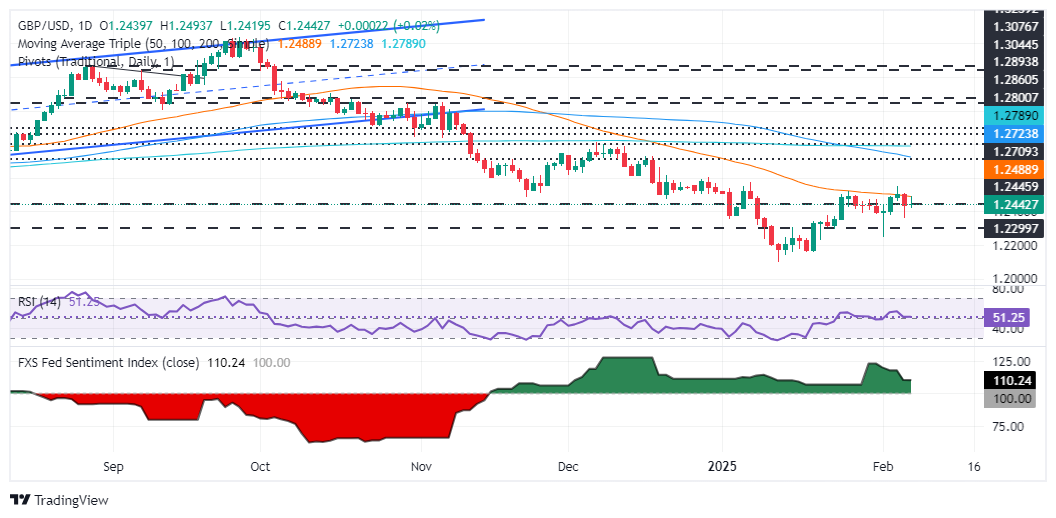Amid the successive news about developments in the oil-rich Middle East region and the possibility of a large-scale war coinciding with the change in the policies of global central banks, the US dollar against the Japanes Yen USD/JPY is moving in a range between 141.64 and 143.90 at the beginning of this exciting week’s trading.
Investor sentiment regarding risk appetite or lack thereof will affect the performance of the currency pair, in addition to the signals of central bank officials in the coming days.
At the beginning of this week’s trading, according to stock trading platforms, Chinese stocks rose by more than 6%, and the Japanese Nikkei index fell by 4.64% after economic reports.
Mainland Chinese stocks were up sharply, with the CSI 300 index jumping more than 6%, led by gains in the property sector, which rose 7.4%.
In contrast, Japan’s Nikkei 225 fell 4.64% on Monday, with industrial production figures and market losses in the property sector playing a major role in the decline. As investors digested key economic data from both countries, the divergence in performance highlighted the divergent economic trajectories in East Asia PMI Data
Economic data released on Monday from China showed some mixed signals. The official Purchasing Managers’ Index (PMI) for September came in at 49.8, slightly higher than the expected 49.5. While the reading was better than expected, it still represents the fifth consecutive month of contraction for the manufacturing sector, indicating continued weakness. Meanwhile, a private survey of purchasing managers conducted by S&P Global painted a gloomier picture. The manufacturing PMI fell to 49.3 in September, down from 50.4 in August, marking the fastest contraction in 14 months. This figure was below expectations at 50.5, highlighting the challenges faced by smaller companies in China’s private sector.
Overall, the CSI 300 index in mainland China rose by 6.22% despite the slowdown in manufacturing. Despite the struggles of the manufacturing sector, Chinese mainland stocks rose, with the CSI 300 index up 6.22%. Consumer and real estate stocks were the main drivers of this performance. The Hang Seng Mainland Properties Index rose by 8%, supported by hopes of economic stimulus and efforts to recover the beleaguered real estate sector.
The Hang Seng Index in Hong Kong also rose by 3.34%, supported by consumer stocks. Optimism surrounding China’s economic recovery overshadowed concerns about the manufacturing contraction, leading to strong gains in the stock markets. The Nikkei 225 index in Japan suffered sharp losses of 4.64%, with industrial production declining by 4.9%. At the same time, Japan had a tough start to the week, with the Nikkei 225 index falling by 4.64%. The real estate sector led the losses, while shares of Isetan Mitsukoshi Holdings, a department store holding company, was the biggest loser on the index, falling by 11%. The broader TOPIX index in Japan also fell by 3.3%.
According to the economic calendar, Japan’s industrial production fell 4.9% year-on-year in August, a significant drop from the previous month’s 0.4% decline. The drop was sharper than expected, with a 3.3% monthly decline, well above the expected 0.9% decline. The sharp contraction in industrial output added to the negative sentiment in Japanese markets.
While Japan’s retail sales rose by 2.8% in August, the Yen weakened. While the manufacturing and industrial sectors in Japan suffered, retail sales provided some positive news. Retail sales in August rose by 2.8% year-on-year, exceeding the 2.3% increase expected by economists. This followed a revised increase of 2.7% in July, indicating that consumer spending in Japan remains resilient despite broader economic challenges.
However, the Japanes Yen weakened 0.13% against the US dollar, trading at 142.38. Overall, investors remain cautious as they weigh the implications of recent economic data and upcoming political changes in the country political scene in Japan
In addition to the economic uncertainty in Japan, investors are also digesting the political shift following Shigeru Ishiba’s victory in the Liberal Democratic Party’s election. Ishiba will succeed Fumio Kishida as Japan’s prime minister, raising questions about potential political shifts that could impact Japan’s economy and markets in the coming months. Outside China and Japan, other Asian markets saw mixed results. Australia’s S&P/ASX 200 rose 0.72%, breaking an all-time high of 8,246.2. In South Korea, the Kospi fell 1.13%, while the smaller-cap Kosdaq fell 1.21%.Dow Jones reaches a new high amid optimism about inflation data
In the United States, the Dow Jones Industrial Average reached a new high on Friday, rising 0.33% to close at 42313.00. This rise came as traders assessed new inflation data, as the Personal Consumption Expenditures (PCE) price index – the Federal Reserve’s preferred inflation measure – showed a year-on-year increase of 2.2% in August. This figure was in line with expectations and boosted hopes that inflation is gradually coming under control, giving US stocks a boost. However, the S&P 500 fell by 0.13%, while the Nasdaq Composite lost 0.39%.
Top Forex Brokers1 Get Started 74% of retail CFD accounts lose money USD/JPY Technical Analysis and Expectations Today:
Based on the daily chart attached, the overall trend for USD/JPY remains bearish and as long as it is closer to the psychological support of 140.00, the bears will remain in control. At the same time, technical indicators are moving towards strong oversold levels. On the other hand, the first break of the overall trend will not happen without bulls moving towards the resistance levels of 147.95 and the psychological resistance of 150.00 respectively. Otherwise, the overall trend will remain bearish. Ultimately, the USD/JPY pair will remain on its current path until markets and investors react to the US jobs numbers and comments from Fed Chairman Jerome Powell.


